And if the priest sees that, behold, the scab spreadeth in the skin, then the priest shall pronounce him unclean: it is a leprosy. – Leviticus 13:8
No one knows exactly when they will take their last breath. The clock slowly ticks away, second by second, as our ultimate fate comes closer.
Even the most minor inconveniences can shape the rest of your life. It was only a headache that started this major shift for one individual. However, this headache grew deeper, digging into the back of Josefina Guerrero’s eyes as she tried to lay her head each night.1
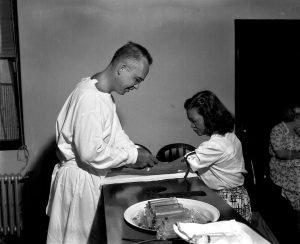
Her body was slowly succumbing to this unknown force that drained every ounce of strength she had left. Despite her fatigue, she stayed devoted to God and prayed for a solution to her worries.2
Issues like headaches and fatigue are fairly common in our world. Something these symptoms have in common are that they are internal, concealed within us. Unfortunately, her illness did not want to stay hidden for long. The disease started to make its appearance, first growing as a small, pink splotch on her cheek. It did not look like a concern initially since it could have been anything. The tiny splotch soon grew into this foreign creature on her face. This would soon force her to go to her husband, Renato Guerrero, to seek out an infectious disease specialist.3 The final verdict: Leprosy.
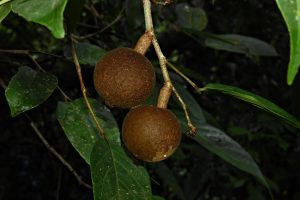
Her body seized as biblical verses flooded her tortured mind. How could this happen? Would God hate her for this? As if the stigma from the Bible was not hard enough, her mind started to picture the worst possible scenarios that she might undergo as her disease progressed.
“We will live through this.” Renato reassured her, doing all he could to ease her worries. Despite the calm words from her husband, she knew the realities that would follow her after this diagnosis was confirmed. If someone was known to have leprosy in Manila, they were forced to make it publicly known that they were infected. Along with public shaming, they migrated to live within colonies of those who were also shunned. The only known medication that was being used to treat leprosy was chaulmoogra oil. Even this plant could not mend the immense pain Guerrero would face for the rest of her life.4
Success is not final, failure is not fatal: it is the courage to continue that counts. – Winston Churchill
Although medicine has been practiced and studied for centuries, there are still many gaps in different diseases, leprosy being a big unknown during World War II. Even with the discovery of Myobacterium leprae dating back to 1873, there was still little information on this mystery. The only diseases that medical physicians at the time studied was tuberculosis since there were roughly thirty thousand deaths a year, compared to leprosy.5

With this in mind, many Filipinos were outcasts and beggars who were forced to leave the lives they once knew since they could not hide their symptoms much longer. Leprosy was deemed a punishment for those who sinned, according to the Old Testament, which many Filipinos followed. Guerrero knew this deep down, so she was doing anything she could to keep her symptoms at bay. However, with the war boiling over between Japan and the United States, the Philippines soon became enveloped in the fight for resources. This left Guerrero in a dangerous standstill because without her medication, keeping her disease hidden would be nearly impossible. Sure, there was the black market, but getting ahold of medications at heinous prices was not an option. Rather than wasting her years in isolation, Guerrero sought out an answer. After praying and seeking solutions, she had a revelation. Like Joan of Arc, people who were in the lowest situations could find themselves becoming honorable heroes. Guerrero knew she wanted to die helping others rather than this debilitating disease.6
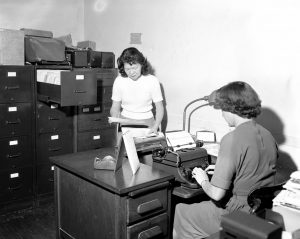
“I want to be a good solider,” Guerrero said to her friend, who she knew was working in an underground resistance movement. With the Japanese military making their way into the city in January of 1942, the guerillas lived in fear, despite having many volunteers. They knew the Japanese were clearing out cities that might have had guerillas, so this was a risky choice for Guerrero to make.7
“Then go underground…I will give you a name,” her friend said. Although Guerrero knew what she was getting herself into, she did not know that the name she would receive belonged to the leader of the resistance. After tracking down this leader, the man had some worry.8
“We don’t take children,” the man told 24-year-old Guerrero.9
“You’d be surprised what children can do,” Guerrero states confidently.10
No matter how many times people criticize you, the best revenge is to prove them wrong. – Zayn Malik
After convincing the head of the guerillas, she was given her first task of watching the garrison and sending reports on the movement of troops. Her notebook was filled with meticulous details on all the troops she saw through her shutters. Once she collected every detail she could in her notebook, she would bring the data to another man who worked in the guerilla unit.11
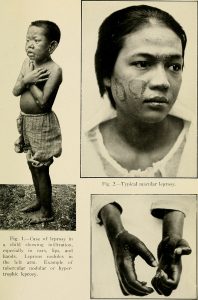
As the war progressed, Guerrero was given her next task. Sure, she knew what she was signing up for, but nothing prepared her for her most dangerous task. As the war started to increase in intensity, Japanese soldiers were building fortifications and emplacements for guns towards the waterfront within Manila. Guerrero was given the assignment to create a map of the Japanese’s location. How on earth was she going to develop a map without getting detained? With how heavily guarded the port was, she would have to walk through time and time again through the fortifications. It did not help that the last few months of her life were difficult due to the shortage of food and medicine. Since she had no access to affordable medication, her disease was rampant as her nodes began to swell up with the splotches on her skin spreading throughout her face, torso, and arms. This should have made her panic, but she saw this as her leverage for achieving the unthinkable.12
Something Guerrero noticed was that the Japanese soldiers would be rather aggressive to any citizen, but now that her symptoms could no longer be hidden, the soldiers dispersed as they tried to stay away from any deemed contagious. Even the Japanese thought leprosy was transmissible, so they did everything they could to stay away from people like Guerrero. Rather than allowing her disease to break her down, she used it as her tool to gather intel.13
“Unclean,” Guerrero would say when soldiers tried to search her. The Japanese were still searching for spies, so it was common for them to conduct full-body searches. “I’m a leper.”14
The scared soldiers would send her away, not realizing they had fallen for her trap. They did not realize a spy was making her way through the waterfront of Manila, taking detailed notes of all the emplacement of weapons in order to create her hand-drawn map once she arrived home. This was a pivotal moment for the guerillas and Guerrero since they did not realize how essential this map would be for them once the bombs started to fall.15
The only thing we have to fear is fear itself. – Franklin D. Roosevelt
The Japanese soon grew suspicious of Guerrero’s actions, so she had to go into hiding for some time in order to keep herself safe. She could have stayed in hiatus for some time, but she never allowed the fear to box her in. Once the soldiers lost interest, she continued to work. It was not until that fateful night in December when she heard the sound of an engine arriving at her house. The mystery vehicle appeared to be the car of a Japanese officer.16
Her heart started to pick up the pace, worry filling her mind as she realized her fate. What if she was caught? What would they do to her? Who would have revealed her secret?
“KNOCK KNOCK KNOCK”
Panic rose in her body as she rushed to hide any evidence that would connect her to what she had been doing recently for the guerillas. Her hands started to shake as she started to open the door, revealing two officers. “May we come in?” An officer asked.17
Odd? Most of the Japanese officers Guerrero met were not as respectful as these officers. However, despite the request, the men barged into their home. After close inspection, it dawned upon Guerrero. “You’re an American!” She exclaimed.18
“This is the man you and I have been working under,” the guerilla soldier explained. Although Guerrero knew she was working for someone, she did not realize she was working under the major of the Eleventh Airborne. After congratulating Guerrero for her work with detailing the map of the gun emplacements, they concluded their night and left to continue their work. They had left some tires before leaving, so when the soldiers came back for their spare tires, the men who visited her had one last mission that could cost Guerrero’s life.19
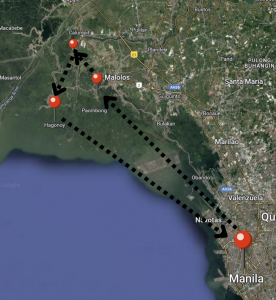
This next task consisted of traveling thirty-five miles north of Manila to deliver a map to Captain Blair of the 37th Infantry Division. This map helped the Americans navigate their way through the city of minefields. (ww2museum). It was too risky to travel by car since they would be subjected to searches, so traveling by foot was the safest option. So, with the map taped between her shoulder blades, Guerrero was set for her mission to deliver her map to the Americans.20
“You had better go to confession and make a good act of contrition…for you will not be coming back.” Her superior told her, not hesitant to remind her of the dangers related to this mission. Her journey first started from Manila to Malolos (halfway to Calumpit). She was blessed not to get noticed, but her journey was yet to be finished. Once she finally made it to Calumpit, she was alerted that the Thirty-Seventh had moved. This meant Guerrero had to turn around and walk all the way back, but, alas, she was able to pass on her map. There, she met Captain Blair, who was in charge of the group stationed in the town Guerrero walked to. He was amazed by her bravery and questioned how she was able to not only create a detailed map but slip by Japanese forces. Guerrero did not hesitate to open up about her hardships and journey to get to where she was, standing in front of Captain Blair.21
Through shock, Captain Blair could only say, “By God…I never dreamed that Filipino women had such courage.”22
The end of all knowledge should be service to others. – Cesar Chavez

As the Thirty-Seventh division made their move towards the Japanese soldiers located in Manila, they knew they were in the thick of it. As the American and Japanese soldiers started to fight to the death, there was one person there who was not trained for combat like this. Guerrero did not let this cloud of chaos get to her, so she decided to walk through the fire fight. Guns were firing from all directions, smoke filled the air, and the ground collected all the remains of the bullets as Guerrero rushed to injured soldiers and civilians. With no care for the bullets nearly killing her, she would tend to those who needed help. “You are tired,” she would say, “Stay here and rest.”23
Guerrero could have run to safety, but that was not in her nature. Despite her disease slowly killing her on the inside, she had the energy to bandage the wounded, carry the fearful children to hide, and even pray for those who have died as she gave them a proper burial.24
A priest who witnessed this heroic act was shocked at the work Guerrero had done, and all he could say was, “I have not seen a human being like Joey.”25
As men fell left and right, all Guerrero could do was help until her energy gave out. This fight lasted roughly 90 minutes, but it felt like a lifetime. There was this strange, calm feeling once the gunshots ceased.26 Most who have fought a long battle would have started celebrating. However, Guerrero’s battle was reignited once the reminder of her illness came back. It was finally time to put the past behind her and focus on her health.
Do not judge me by my success; judge me by how many times I fell down and got back up again. – Nelson Mandela
With the war coming to an end, her new battle of finding her identity continued, as her disease was the prime focus that shunned her once more. Guerrero was sent to a leprosarium that was roughly 15 miles northeast of Manila. This camp was a nightmare in itself, with only four nurses assisting 650 patients. There was no running water or electricity, patients would die from malnutrition, and oftentimes, patients would be forced to sleep on unclean floors.27
Guerrero should have been resting and recovering from her long battle against the Japanese soldiers, but she knew what was happening to them in the camp was unacceptable. She started to clean the camp, became a mentor to others in the hospital, and even built coffins for those who succumbed to their ultimate fate.28
One day, Guerrero wrote a letter to a friend who lived in San Francisco, describing the horrid conditions she and the others were living in. Eventually, this letter was in the hands of the Catholic Chaplain at the National Leprosarium, located in Carville, Louisiana. This private letter soon made national headlines and even gained attention back in Manila. This forced the government to send investigators to analyze the situation and confirm that what was going on in her letter was true. Thanks to Guerrero’s words, the dormitories were reconstructed, beds were brought in, and electricity and water was soon restored.29
Guerrero knew she needed to find a better treatment. She could not stay in the leprosarium any longer, so she was set on obtaining her U.S. visa because of the medical treatments that were advancing in Carville. After a long battle to obtain her well-deserved visa, she became the first foreign national, sick with leprosy, to receive her visa and was admitted to the Carville Leprosarium later in 1948.30
It took her nine years to finally feel free. Free from her shackles and onto better things in life. Oddly enough, she did not want to continue in the limelight, so she was determined to keep her past hidden from those around her. Guerrero always loved classical music and performances. Growing up, she could not enjoy her passions, considering everything that stopped her from taking time for herself. This was her chance to finally live her life. After relocating to Washington D.C., she became a volunteer usher for the Kennedy Center for Performing Arts, living the remainder of her life in peace at last.31
Holding on is believing there’s only a past; letting go is knowing that there’s a future. – Daphne Rose Kingma
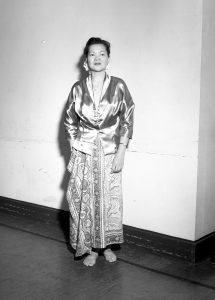
This story is one of bravery, courage, and selflessness. Despite having a debilitating disease, Guerrero still wanted to make the most of her life rather than allowing the disease to take over completely. There are not many Filipino heroes that are highlighted in today’s society, so this story was special for many reasons. Guerrero’s life showed that despite experiencing hardships and challenges, there is no excuse to sit down and do nothing. Life carries on, but it is up to the person living to make the decision to do what’s right. Guerrero might not have led a famous life after treatment, but she lived a fulfilled life. If there is one thing people can take from this story, it is to never lose hope, even when life seems to be against you.
Acknowledgements
I want to first thank Dr. Bradford Whitener for opening my eyes to a world of creativity and self-discovery. Despite initially wanting to take a history for history haters course, I made the right decision to take his U.S. History course my sophomore year because I would not have had all these opportunities without his support. Thank you to Dr. Celine Jacquemin for being my rock and support throughout the many semesters I have assisted in the Research Scholars Project. She has taught me to never doubt myself and to always look towards the positive light. Thank you, finally, to the StMU Research Scholars project for challenging me to go beyond my writing capabilities. For those who have read this far and are wanting to write an article, never give up. Everyone can be a writer, but it is up to you to choose that path and take on the challenge.
- Ben Montgomery, Leper Spy: The Story of an Unlikely Hero of World War II (Chicago: Chicago Review Press, 2016), 24-26. ↵
- Ben Montgomery, Leper Spy: The Story of an Unlikely Hero of World War II (Chicago: Chicago Review Press, 2016), 24-26. ↵
- Ben Montgomery, Leper Spy: The Story of an Unlikely Hero of World War II (Chicago: Chicago Review Press, 2016), 24-26. ↵
- Ben Montgomery, Leper Spy: The Story of an Unlikely Hero of World War II (Chicago: Chicago Review Press, 2016), 24-26. ↵
- Ben Montgomery, Leper Spy: The Story of an Unlikely Hero of World War II (Chicago: Chicago Review Press, 2016), 46-48. ↵
- Ben Montgomery, Leper Spy: The Story of an Unlikely Hero of World War II (Chicago: Chicago Review Press, 2016), 46-48. ↵
- Ben Montgomery, Leper Spy: The Story of an Unlikely Hero of World War II (Chicago: Chicago Review Press, 2016), 46-48. ↵
- Ben Montgomery, Leper Spy: The Story of an Unlikely Hero of World War II (Chicago: Chicago Review Press, 2016), 46-48. ↵
- Ben Montgomery, Leper Spy: The Story of an Unlikely Hero of World War II (Chicago: Chicago Review Press, 2016), 46-48. ↵
- Ben Montgomery, Leper Spy: The Story of an Unlikely Hero of World War II (Chicago: Chicago Review Press, 2016), 46-48. ↵
- Ben Montgomery, Leper Spy: The Story of an Unlikely Hero of World War II (Chicago: Chicago Review Press, 2016), 53-54. ↵
- Ben Montgomery, Leper Spy: The Story of an Unlikely Hero of World War II (Chicago: Chicago Review Press, 2016), 77-84. ↵
- Ben Montgomery, Leper Spy: The Story of an Unlikely Hero of World War II (Chicago: Chicago Review Press, 2016), 77-84. ↵
- Ben Montgomery, Leper Spy: The Story of an Unlikely Hero of World War II (Chicago: Chicago Review Press, 2016), 77-84. ↵
- Ben Montgomery, Leper Spy: The Story of an Unlikely Hero of World War II (Chicago: Chicago Review Press, 2016), 77-84. ↵
- Ben Montgomery, Leper Spy: The Story of an Unlikely Hero of World War II (Chicago: Chicago Review Press, 2016), 99-101. ↵
- Ben Montgomery, Leper Spy: The Story of an Unlikely Hero of World War II (Chicago: Chicago Review Press, 2016), 99-101. ↵
- Ben Montgomery, Leper Spy: The Story of an Unlikely Hero of World War II (Chicago: Chicago Review Press, 2016), 99-101. ↵
- Ben Montgomery, Leper Spy: The Story of an Unlikely Hero of World War II (Chicago: Chicago Review Press, 2016), 99-101. ↵
- Ben Montgomery, Leper Spy: The Story of an Unlikely Hero of World War II (Chicago: Chicago Review Press, 2016), 103-111. ↵
- Ben Montgomery, Leper Spy: The Story of an Unlikely Hero of World War II (Chicago: Chicago Review Press, 2016), 103-111. ↵
- Ben Montgomery, Leper Spy: The Story of an Unlikely Hero of World War II (Chicago: Chicago Review Press, 2016), 103-111. ↵
- Ben Montgomery, Leper Spy: The Story of an Unlikely Hero of World War II (Chicago: Chicago Review Press, 2016), 105-111. ↵
- Ben Montgomery, Leper Spy: The Story of an Unlikely Hero of World War II (Chicago: Chicago Review Press, 2016), 105-111. ↵
- Ben Montgomery, Leper Spy: The Story of an Unlikely Hero of World War II (Chicago: Chicago Review Press, 2016), 105-111. ↵
- Ben Montgomery, Leper Spy: The Story of an Unlikely Hero of World War II (Chicago: Chicago Review Press, 2016), 105-111. ↵
- “From Outcast to Spy to Outcast: The War Hero with Hansen’s Disease,” The National WWII Museum | New Orleans, May 15, 2020, https://www.nationalww2museum.org/war/articles/philippines-spy-joey-guerrero. ↵
- “From Outcast to Spy to Outcast: The War Hero with Hansen’s Disease,” The National WWII Museum | New Orleans, May 15, 2020, https://www.nationalww2museum.org/war/articles/philippines-spy-joey-guerrero. ↵
- “From Outcast to Spy to Outcast: The War Hero with Hansen’s Disease,” The National WWII Museum | New Orleans, May 15, 2020, https://www.nationalww2museum.org/war/articles/philippines-spy-joey-guerrero. ↵
- “Josefina Guerrero – Outcast, Spy, Citizen,” Veteran Stories, accessed April 9, 2025, https://veteranstories.kennesaw.edu/items/show/22. ↵
- “Josefina Guerrero – League of Women Voters of Indiana.” Accessed April 9, 2025. https://www.lwvin.org/content.aspx?page_id=5&club_id=42001&item_id=74044. ↵




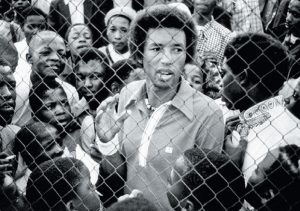
3 comments
Alejandro Rubio Chappell
This piece really struck me. It shows how someone society tried to cast aside turned her pain into power and purpose. Guerrero’s story isn’t just inspiring—it’s a reminder that courage doesn’t always come from physical strength, but from choosing to help others even while carrying your own suffering. Her life challenges how we define heroism, and her quiet strength stayed with me long after reading.
Micaella Sanchez
Josefina Guerrero’s story deeply moved me. It serves as a reminder that courage can emerge from the most unexpected places. Her determination in the face of disease, war, and social rejection inspires us to face struggles with resilience and purpose. Guerrero’s life challenges people to use whatever hardships they carry not as a burden, but as fuel to serve others and fight for what’s right.
Carlos Flores
Josefina Guerrero’s story is a testament to unwavering strength and resilience in the face of adversity. Despite battling leprosy and the harsh stigma that came with it, she chose to serve others and contribute to the greater good, all while facing insurmountable challenges. Her courage, selflessness, and determination inspire us to rise above life’s hardships and never lose hope.